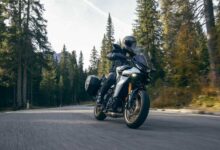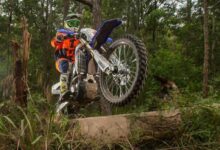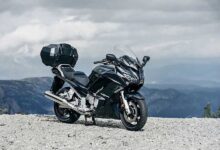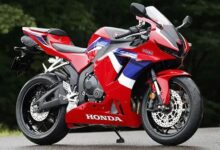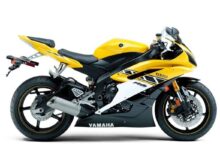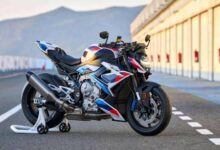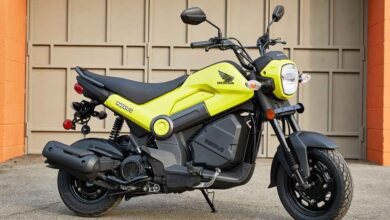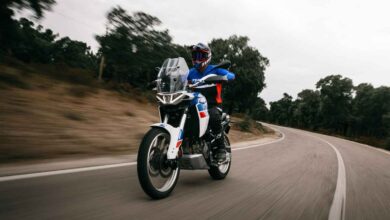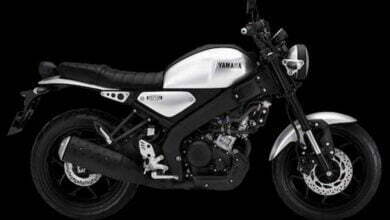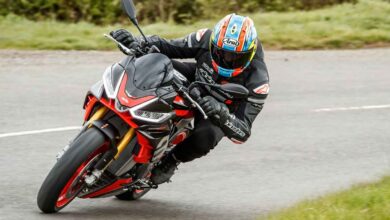Review of the BMW K75: A Classic Motorcycle with Timeless Appeal
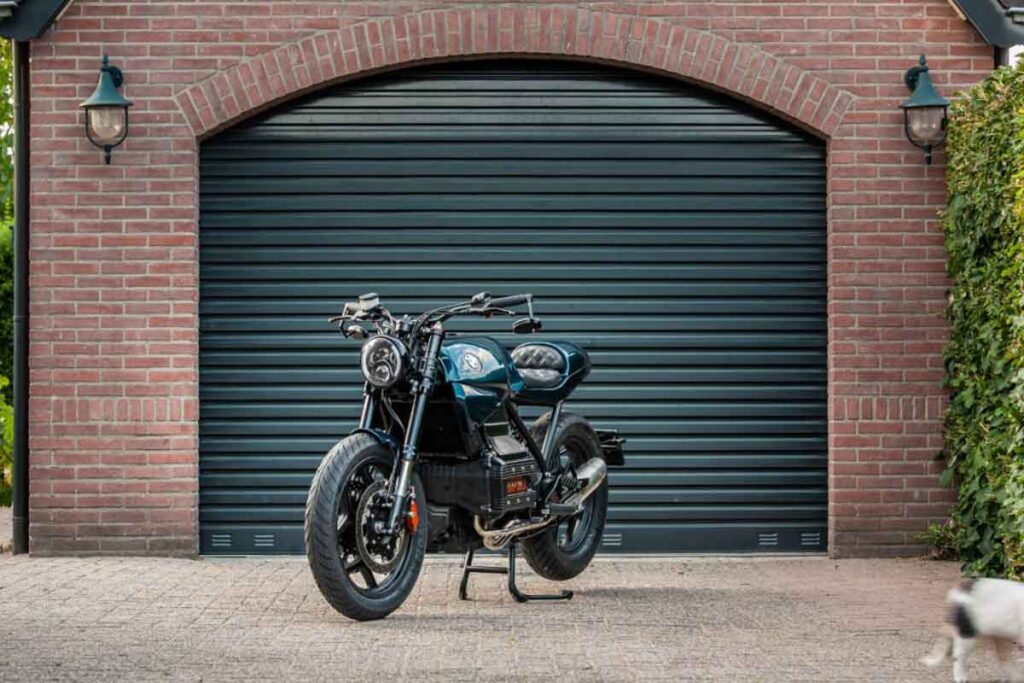
The BMW K75 is a legendary motorcycle that has captivated riders for decades. With its sleek design, powerful engine, and superior handling, it has become a favorite among motorcycle enthusiasts. In this blog post, we will take a detailed look at the BMW K75, exploring its key features, performance, and why it continues to be an iconic choice for riders.
Contents
- 1 History and Development of the BMW K75
- 2 Design and Aesthetics
- 3 Engine Performance and Technology
- 4 Handling and Ride Quality
- 5 Safety Features and Reliability
- 6 Customization and Accessories
- 7 Community and Resale Value
- 8 Maintenance and Service
- 9 Design
- 10 Significant Developments 1985
- 11 BMW K75 Specs & Features (1986-1995 Models)
- 12 Fuel & Lubrication
- 13 Transmission
- 14 Battery
- 15 Suspension
- 16 Drivetrain
- 17 Ignition
- 18 Tires & Brakes
- 19 Suspension
- 20 Common BMW K75 Problems
- 21 Spline Failure
- 22 Fuel Tank Leak
- 23 Starting Problems
- 24 Fuel and Electrical
- 25 Double-Edged ABS
- 26 Flimsy Components
- 27 Miscellaneous
- 28 Recommended Modifications
- 29 Maintenance
- 30 About BMW
- 31 Conclusion
History and Development of the BMW K75
The BMW K75 was first introduced in the mid-1980s as part of BMW’s K series lineup. It was designed as a three-cylinder variant to complement the existing four-cylinder models. The K75 was renowned for its unique engine configuration, with the cylinders arranged in a transverse inline layout. This layout contributed to a smooth and balanced performance, making the K75 stand out from its competitors.
Design and Aesthetics
The BMW K75 boasts a timeless design that exudes elegance and modernity. Its aerodynamic fairing, muscular tank, and clean lines give it a distinct presence on the road. The bike’s ergonomic riding position ensures comfort during long rides, while the adjustable suspension allows for customization according to the rider’s preferences. The K75’s attention to detail is evident in its high-quality finish and premium components, making it a true work of art.
Engine Performance and Technology
Equipped with a 740cc inline-three engine, the BMW K75 offers impressive power and torque throughout the rev range. The fuel-injected engine delivers smooth acceleration and excellent throttle response, making it suitable for both city commuting and highway cruising. The K75 also features advanced technology such as electronic ignition, ABS brakes (depending on the model year), and a shaft drive system, ensuring reliability and ease of maintenance.
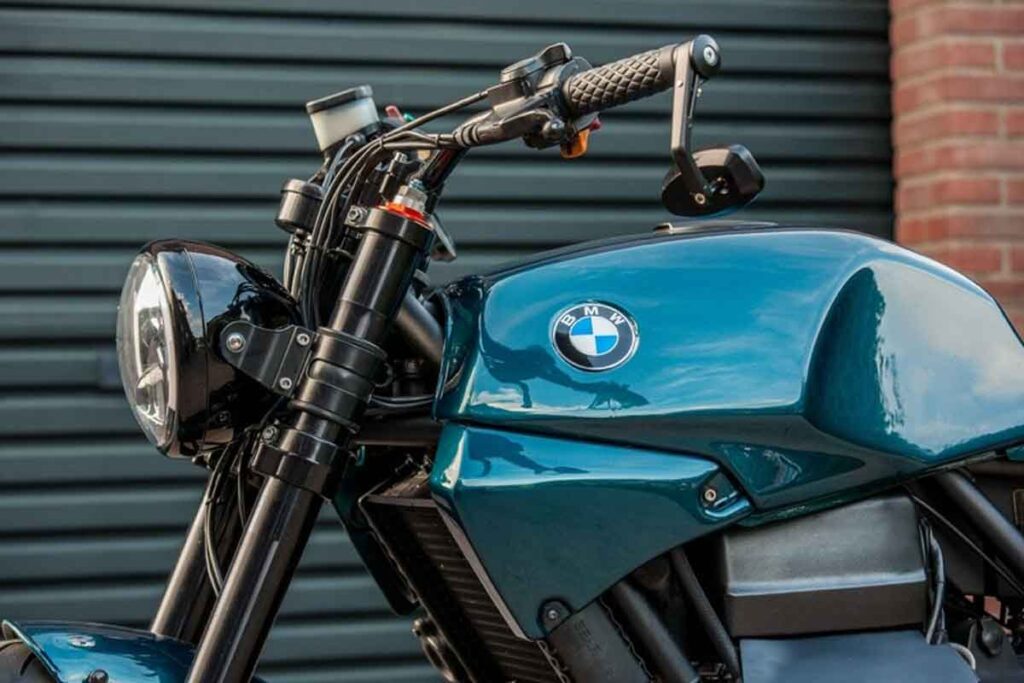
Handling and Ride Quality
One of the standout features of the BMW K75 is its exceptional handling and ride quality. The bike’s low center of gravity and balanced weight distribution contribute to its nimble and agile nature. Whether navigating tight corners or cruising at high speeds, the K75 offers stability and precision. The suspension system, coupled with its sturdy frame, provides a comfortable and controlled ride, even on uneven road surfaces.
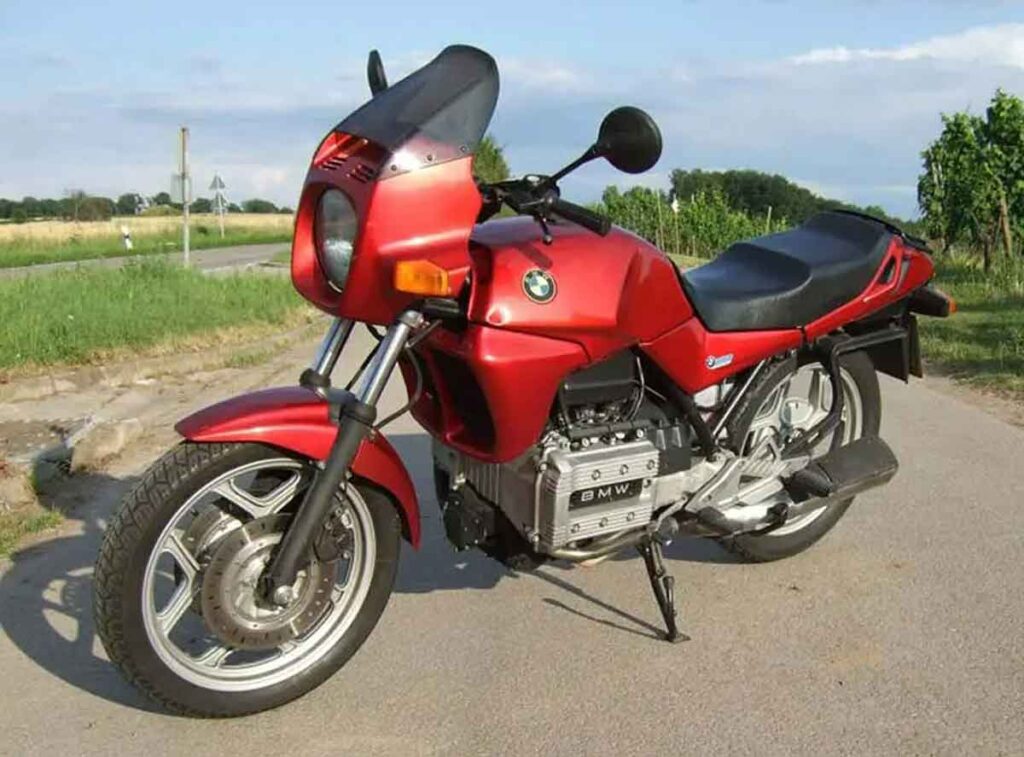
Safety Features and Reliability
BMW has always prioritized rider safety, and the K75 is no exception. Depending on the model year, the K75 may come equipped with ABS brakes, enhancing stopping power and offering increased confidence on the road. Additionally, the bike’s powerful lighting system ensures excellent visibility in all conditions. With BMW’s reputation for reliability and durability, the K75 is a motorcycle that riders can trust for years to come.
Customization and Accessories
One of the joys of owning a BMW K75 is the ability to personalize it to suit individual preferences. There is a wide range of aftermarket accessories and customization options available, allowing riders to create a unique look and enhance functionality. From luggage systems and windshields to custom seats and exhausts, the possibilities are endless for transforming the K75 into a personalized masterpiece.
Community and Resale Value
The BMW K75 has a dedicated community of enthusiasts who appreciate its timeless design and exceptional performance. Joining this community can provide opportunities for shared experiences, knowledge exchange, and even organized rides. Moreover, the K75 has proven to hold its value well over time, making it an excellent investment for those looking for a classic motorcycle that retains its allure and desirability.
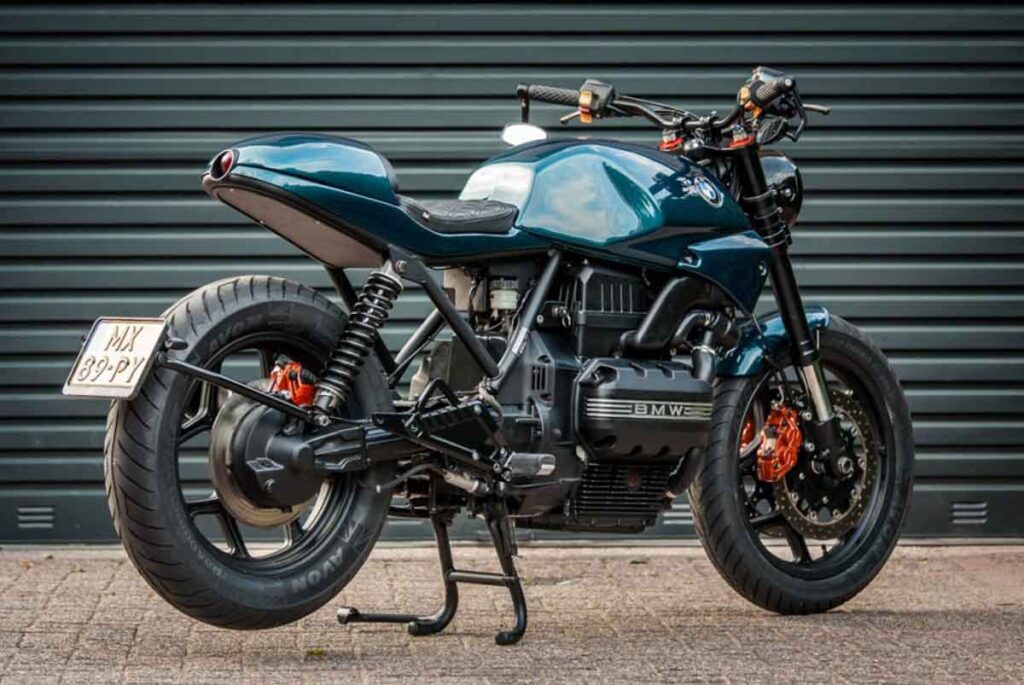
Maintenance and Service
Routine maintenance is vital for keeping any motorcycle in optimal condition, and the BMW K75 is no exception. Regular oil changes, brake inspections, and tire rotations are essential for ensuring safety and longevity. Fortunately, BMW has an extensive network of authorized service centers, making it convenient for K75 owners to find expert technicians who are familiar with the bike’s unique characteristics.
The Origin of the ‘Flying Brick’ In the early 80s, BMW’s famous K-bikes earned themselves the nickname ‘Flying Brick.’ This distinctive alias is mostly due to the series’ power mill, which resembles a large metal box positioned at the bottom of the motorcycle.
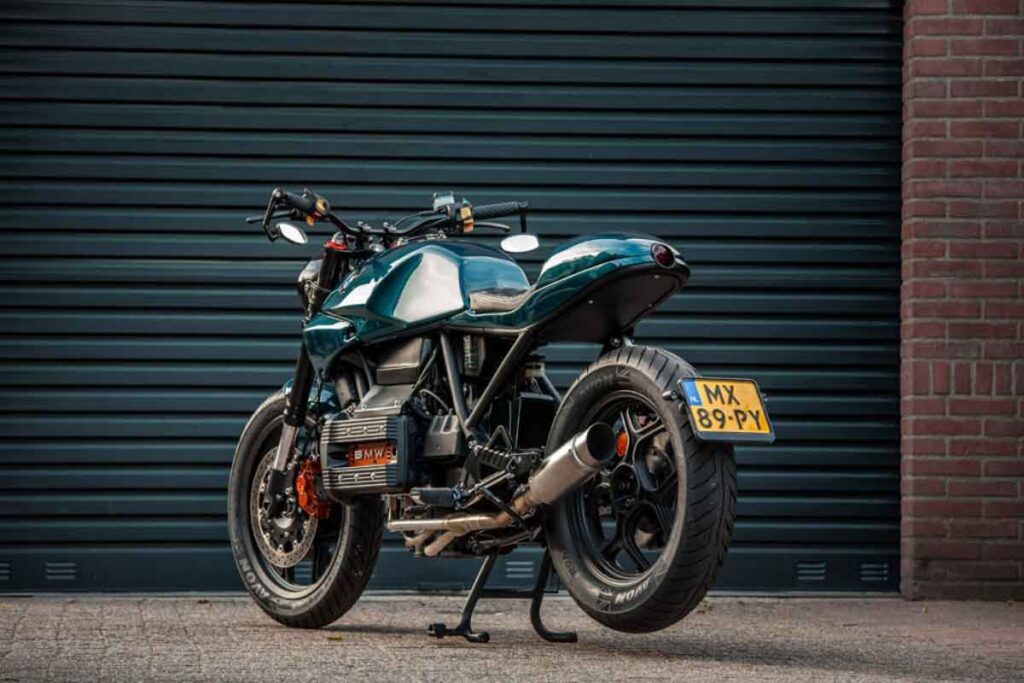
Design
The BMW K series was not the iconic design of the German firm, but rather a response to compete with the fast-growing “Big Four” and meet increasingly strict emission standards. In terms of design, BMW covered all bases – from its use of an inline-4 engine, LE-Jetronic fuel injection (which was practically unheard of four decades ago), and a 90° bevel shaft drive to its sophisticated styling at the time.
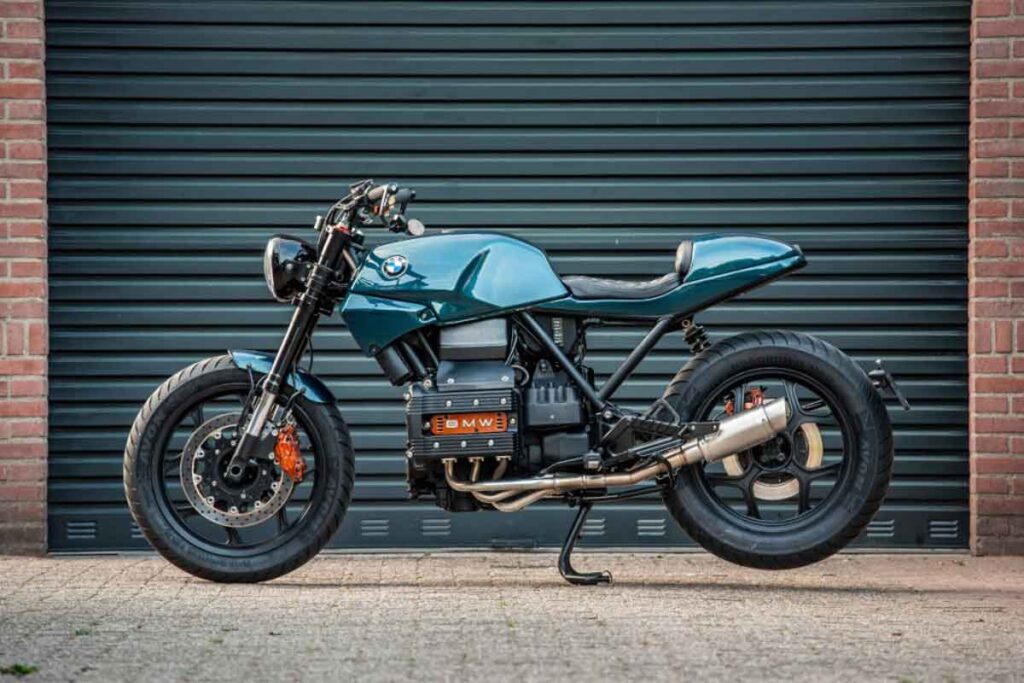
Innovations The K75 led to numerous innovations in the current K-bikes. This departure from the norm sparked much-needed ingenuity to further develop successors to the K75 without compromising the monstrous, clean-burning nature of their signature boxer engines. In retrospect, the BMW K75 lineup and the entire K series were a welcome deviation from the norm. And it’s fortunate that riders still have the opportunity to enjoy these ‘Flying Bricks’ today.
Significant Developments 1985
All BMW K series bikes, including the 1986 K75C or “Classic,” received solid-mounted footpegs, a revised rear cowling, saddle configuration, exhaust pipe mounting, and a redesigned fuel pump. They also received two mounting points at the rear of the fuel tank to address an earlier setup that was prone to cracking and vibration. The steering head bearing setup was changed from a top bolt to a locknut, and a Fluidbloc damper was added.
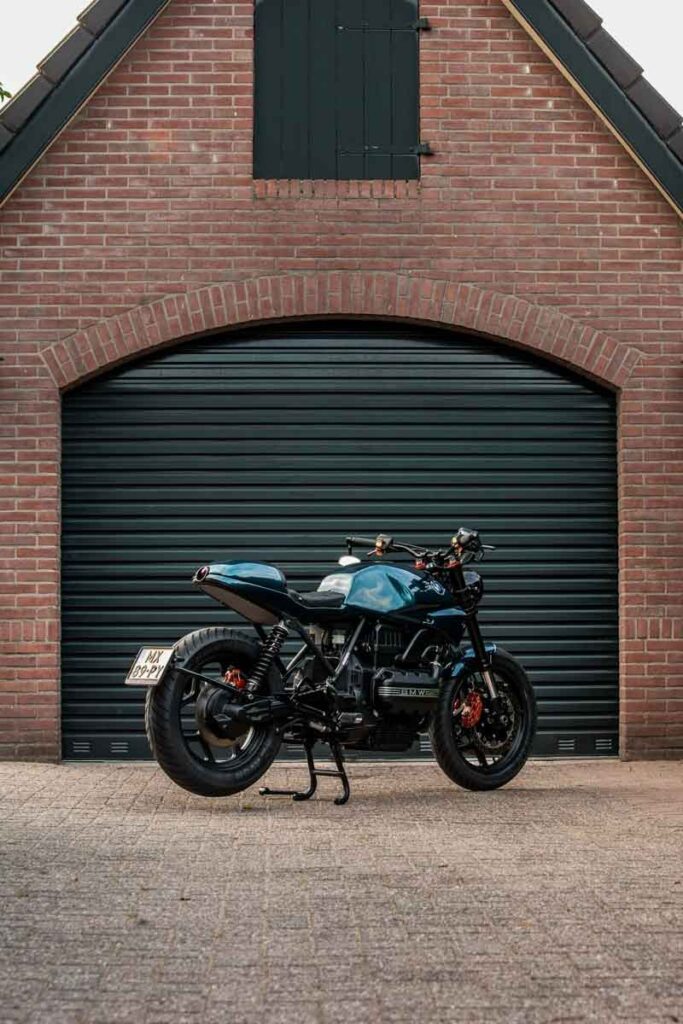
1986 Replacing the tank check valve with a standpipe began with the K75S and was later applied to all K models. Fork gaiters, a footpeg plate, and a new rear brake switch were introduced, and insulation was added to the bottom of the fuel tank to prevent excessive heat buildup. Non-hardened exhaust valve seats on earlier models allowed the use of leaded gasoline.
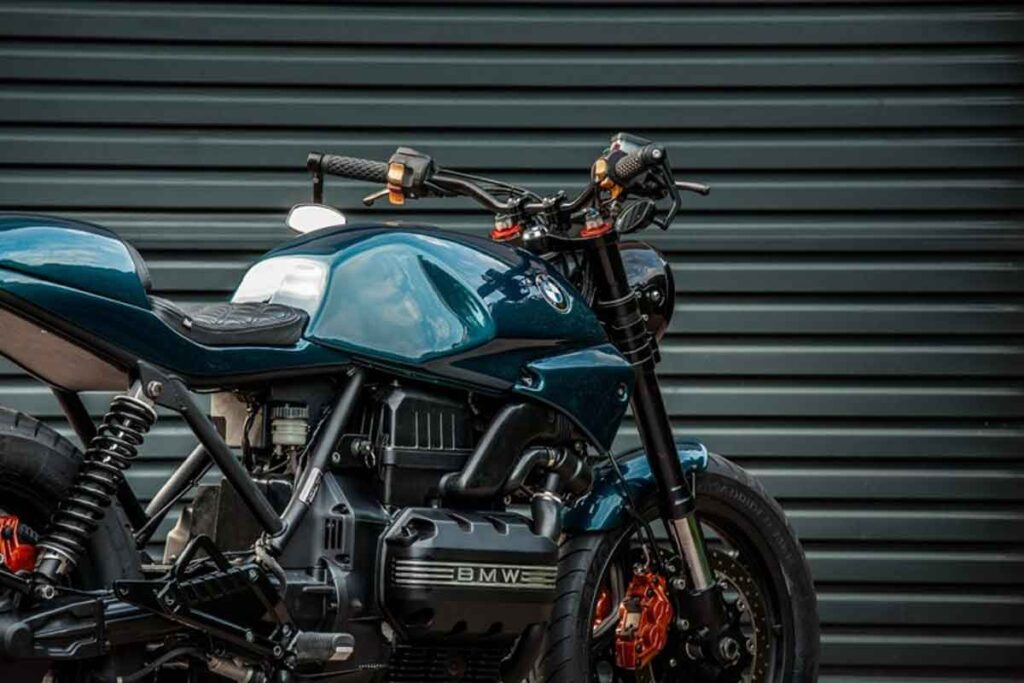
Compression was detuned to 10.5:1. Consequently, performance figures decreased to 70 bhp (51.2 kW) @ 8,200 RPM from 75 bhp, and torque output decreased to 65 Nm (6.6 kgf-m, 47.9 ft-lb) @ 6,500 RPM from 68 Nm.
1987-1989 In 1987, S models received revised anti-backlash gears and modified fork seals. After two years, the standard BMW K75 or Classic trim was introduced. Splines were hardened on all BMW K bikes within the same year.
BMW K75 Specs & Features (1986-1995 Models)
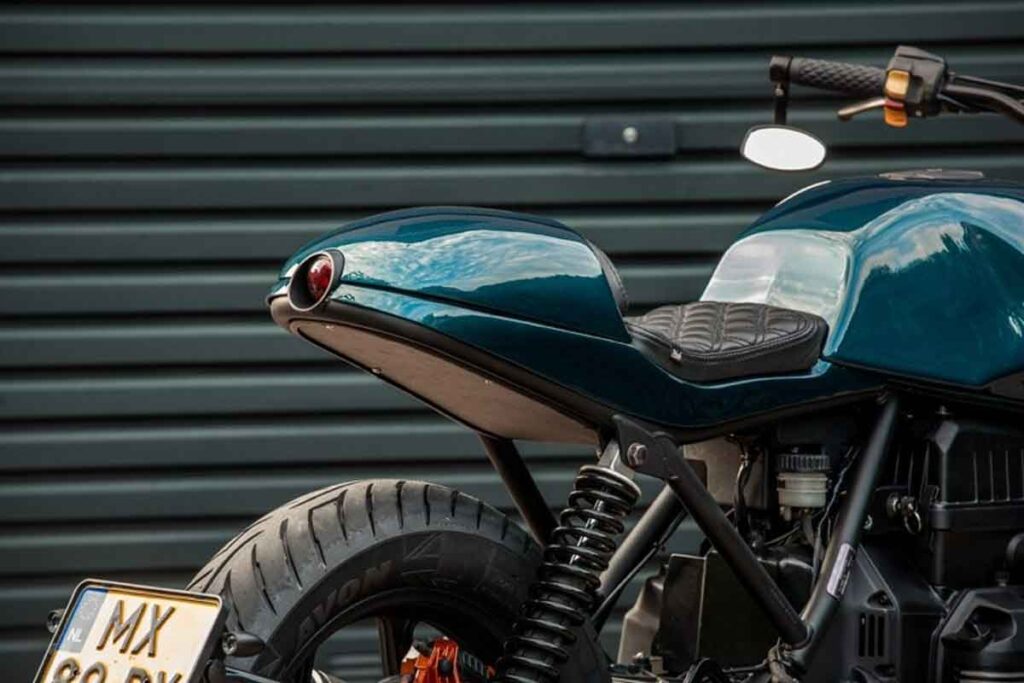
JEG14 /, CC BY-SA 3.0, via Wikimedia Commons Engine The K75 BMW is powered by a liquid-cooled, transversely installed DOHC 4-stroke inline engine. It has a near-square bore-stroke ratio of 67 x 70 mm (2.64 x 2.76 inches). Piston displacement is 740 cm³ (45.16 in³), while the compression ratio is 11.0:1. A Bosch LE-Jetronic fuel injection system with fuel cutoff on the overrun (supplemented by a Bosch roller-cell fuel pump) handles the air-fuel mixture.
The mill configuration for base/C/S trims contributes to a claimed horsepower of 75 bhp (55 kW) @ 8,500 RPM, maximum torque of 68 Nm (6.9 kgf-m, 50.1 ft-lb) @ 6,750 RPM, and a top speed of 121 mph (194 km/h). Sportier ‘S’ (Special) models are slightly faster at 124 mph (199.5 km/h), while BMW K75 RTs are relatively slower at 108 mph (173.8 km/h).
Original sales brochures in ‘86 show a marketed horsepower of 70 bhp (51.2 kW) @ 8,200 RPM, torque output of 65 Nm (6.6 kgf-m, 47.9 ft-lb) @ 6,500 RPM, and a compression ratio of 10.5:1.
Fuel & Lubrication
The tank capacity is 21 L (5.5 US gallons, including 5.0 L/1.3 US gallons – reserve) of unleaded or premium leaded gasoline. Early models released in the UK and the US used fuel with a rating of at least PON 85/RON 95, while later models downgraded to variants with at least PON 82.5/RON 91 (ratings based on the German DIN 51600 standard).
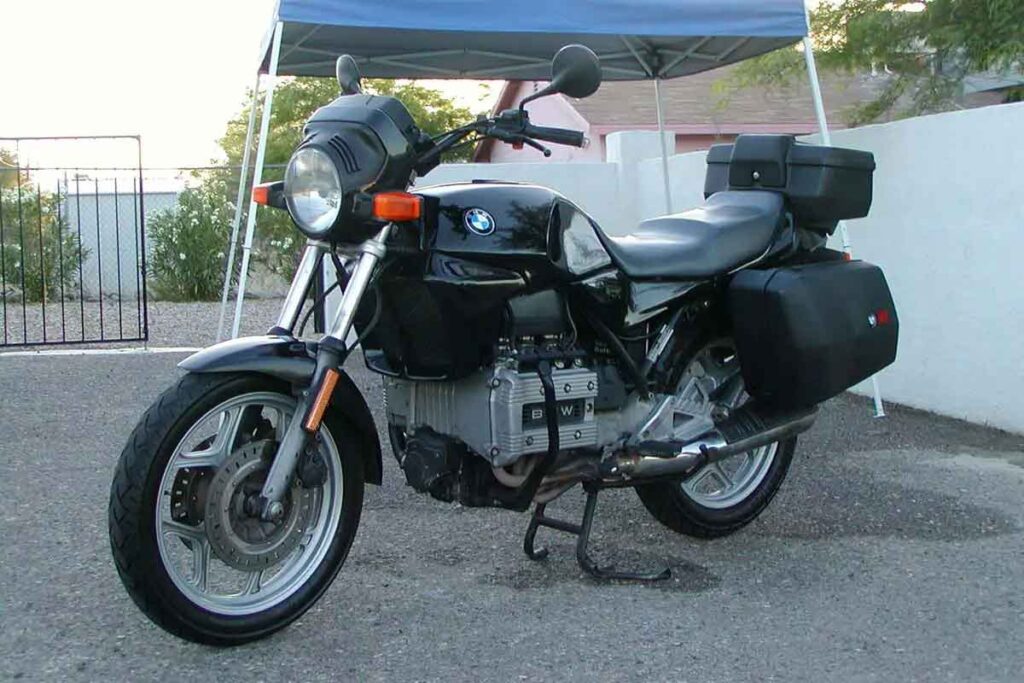
Gas mileage varies and can range from 4.0-4.2 L/100 km (cruising at 55.9 mph, 90 km/h) to 5.4-5.6 L/100 km (steady driving at 74.6 mph, 120 km/h). The owner’s manual provides a range of 42-56 MPG, while marketing literature advertises 51-66 MPG, depending on the iteration.
“Germany continues to be the manufacturer’s largest market, and the R 1250 GS remains the best-selling BMW motorcycle,” praises MCNews.
“I would like to sincerely thank our customers worldwide for the tremendous trust they have once again placed in us in 2022,” adds Dr. Markus Schramm, the Head of BMW Motorrad in the aforementioned report.
“The record-breaking results in 2022 clearly demonstrate the popularity of our appealing product range and brand among customers. I eagerly anticipate our centenary year in 2023 with great excitement and confidence.”
Drivetrain The BMW K75 is equipped with a 5-speed, claw-shifted gearbox that includes integral shock dampers for all gears. Power is delivered to the ground through a single 165-mm dry plate clutch with a step-up diaphragm spring. The bike utilizes a pre-stretched, endless single roller chain with 126 links to handle wheelspin. The final drive is a Cardan shaft drive with corresponding sprocket sizes of 35/18T. This configuration contributes to the naked bike’s superb handling, controllability, and all-roundedness.
For reference, here are the stock gear ratios for the K75:
Transmission
Gear Ratio (1st) – 4.497:1 Transmission Gear Ratio (2nd) – 2.959:1 Transmission Gear Ratio (3rd) – 2.304:1 Transmission Gear Ratio (4th) – 1.879:1 Transmission Gear Ratio (5th) – 1.666:1
Ignition The BMW K75 features an all-electronic, breakerless microprocessor-controlled digital ignition system with a timing of 4°–6° BTDC @ 1,300 RPM (initial “F” mark). It is powered by a 14V 460W triple-phase alternator. The bike’s lighting system, including the 180-mm halogen headlights, turn signals, instrumentation indicators, and electronic accessories, is powered by a 12V 20 Ah/(10 HR) battery for base models or a 12V 30 Ah/(10 HR) battery for special versions. Spark ignition is provided by a Bosch X5DC spark plug with a gap of 0.6–0.7 mm (0.024–0.028 inch).
The recommended battery format for the K75 is unspecified in the service manual. However, online search results and the Yuasa Powersports Battery catalog suggest using a Yuasa Yumicron 53030 battery (view on Amazon) for RT models. Based on the same resources, all other iterations should work with a YT19BL-BS battery. Please refer to the below battery formats to determine which one fits best, as they are compatible with the BMW K75 lineup:
Battery
Format – Dimensions (L x W x H) YIX30L-BS – 12V 30 Ah/(10 HR) – 166 x 126 x 175 mm (6.56 x 5.00 x 6.88 inches) YT19BL-BS – 12V 17.7 Ah/(10 HR) – 184 x 81 x 170 mm (7.25 x 3.19 x 6.69 inches)
Tires & Brakes The stock tires on the BMW K75 consist of 100/90 H18 (56H) and 120/90 H18 (65H) for base/C models, and 100/90 V18 (56V) and 130/90 V17 (68V) for K75S trims. These tubeless tires are mounted on MTH 2.50 x 18E and MTH 2.75 x 18E/2.75 x 17E cast light-alloy rims for the front and rear, respectively. The K75 lineup features dual front hydraulic discs with a diameter of 285 mm. The S trims have a single rear hydraulic disc, while all other models have a rod-operated, 200-mm SLS drum connected to the rear wheel.

The recommended cold-tire pressure for solo riding is 200–250 kPa (2.04–2.50 kgf/cm2, 29–36 psi), or 230–290 kPa (2.34–2.95 kgf/cm2, 33–42 psi) for two-up applications. These values can be adjusted slightly for speeds above 112 mph (180 km/h) and when riding with a passenger. If the factory tires need to be replaced due to wear or damage, it is recommended to use same-size Michelin Commander II Bias Tires (view on Amazon).
Suspension
Earlier K75 models feature a front suspension system consisting of 41.3-mm Brembo telescopic forks housed in a tubular space frame. In later models, this setup was changed to adjustable 41-mm Showa forks with guide bushes in the stanchion and fork slider. At the rear, there is a mono-lever swingarm with 3-way spring struts and double-acting hydraulic shocks.
The front forks are paired with coil springs that can be either long, two-piece, or have sports settings specific to K75S versions, depending on the year and trim. The front and rear suspension units provide 7.3 inches (185 mm) and 4.3 inches (110 mm) of wheel travel, respectively.
| Year – Model – Trim | List Price | Retail/Trade-In Values |
|---|---|---|
| 1986 BMW K75C | N/A | N/A |
| 1986 BMW K75T | N/A | $1,625 – $6,320 |
| 1987 BMW K75C | $5,800 | $580 – $2,385 |
| 1987 BMW K75T | ||
| 1987 BMW K75S | $6,625 | $800 – $5,905 |
| 1988 BMW K75C | $6,425 | $580 – $2,470 |
| 1988 BMW K75 | $6,750 | $580 – $2,545 |
| 1988 BMW K75S | $7,325 | $640 – $2,750 |
| 1989 BMW K75 | $6,995 | $640 – $2,845 |
| 1989 BMW K75S | $7,325 | $580 – $2,545 |
| 1990 BMW K75 | $5,990 | $640 – $2,685 |
| 1990 BMW K75S | $6,990 | $670 – $2,885 |
| 1990 BMW K75RT | $7,990 | $700 – $3,295 |
| 1991 BMW K75 | $6,190 | $640 – $2,780 |
| 1991 BMW K75S | $7,290 | $700 – $3,295 |
| 1991 BMW K75S (ABS) | $8,390 | $755 – $3,715 |
| 1991 BMW K75RT | $755 – $3,800 | |
| 1991 BMW K75RT (ABS) | $9,490 | $790 – $4,020 |
| 1992 BMW K75 | $6,390 | $670 – $2,995 |
| 1992 BMW K75S | $7,890 | $700 – $3,430 |
| 1992 BMW K75S (ABS) | $8,990 | $790 – $4,020 |
| 1992 BMW K75RT | $8,890 | $790 – $3,930 |
| 1992 BMW K75RT (ABS) | $9,990 | $800 – $4,565 |
| 1993 BMW K75 | $6,590 | $700 – $3,160 |
| 1993 BMW K75S (ABS) | $9,290 | $790 – $3,930 |
| 1993 BMW K75RT (ABS) | $10,290 | $800 – $4,565 |
| 1994 BMW K75 | $6,790 | $700 – $3,430 |
| 1994 BMW K75A (ABS) | $7,790 | $755 – $3,800 |
| 1994 BMW K75S (ABS) | $9,590 | $825 – $4,295 |
| 1994 BMW K75RT (ABS) | $10,590 | $825 – $4,775 |
| 1995 BMW K75 | $7,490 | $700 – $3,365 |
| 1995 BMW K75 3 | $7,790 | $580 – $2,240 |
| 1995 BMW K75 3A (ABS) | $8,990 | $580 – $2,430 |
| 1995 BMW K75S (ABS) | $10,790 | $790 – $4,295 |
| 1995 BMW K75RT (ABS) | $12,590 | $855 – $4,815 |
Drivetrain
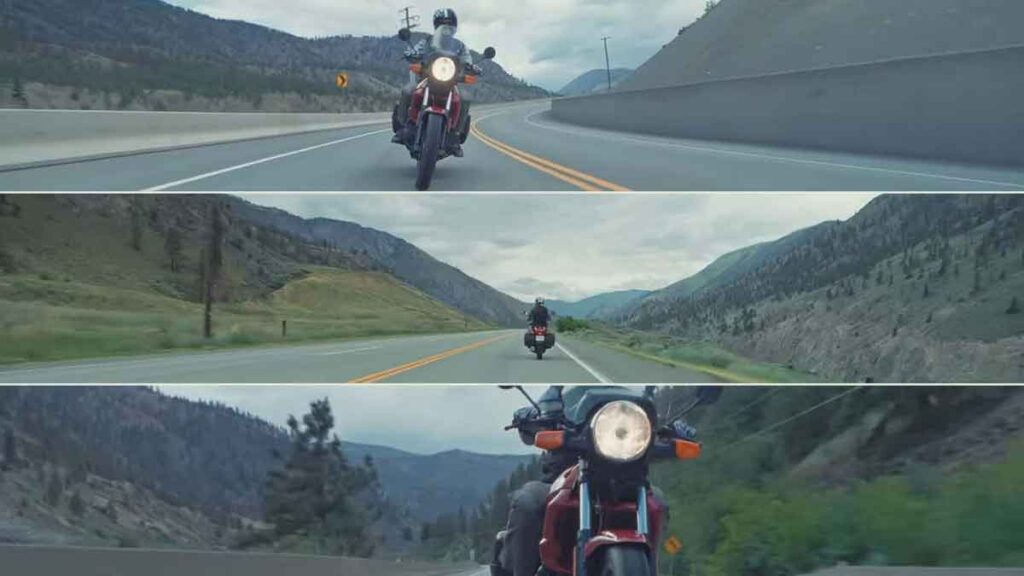
The BMW K75 is equipped with a 5-speed, claw-shifted gearbox that includes integral shock dampers for all gears. Power is delivered to the ground through a single 165-mm dry plate clutch with a step-up diaphragm spring. The bike utilizes a pre-stretched, endless single roller chain with 126 links to handle wheelspin. The final drive is a Cardan shaft drive with corresponding sprocket sizes of 35/18T. This configuration contributes to the naked bike’s superb handling, controllability, and versatility.
For reference, here are the stock gear ratios for the K75:
Transmission Gear Ratio (1st) – 4.497:1
Transmission Gear Ratio (2nd) – 2.959:1
Transmission Gear Ratio (3rd) – 2.304:1
Transmission Gear Ratio (4th) – 1.879:1
Transmission Gear Ratio (5th) – 1.666:1
Ignition
The BMW K75 features an all-electronic, breakerless microprocessor-controlled digital ignition system with a timing of 4°–6° BTDC @ 1,300 RPM (initial “F” mark). It is powered by a 14V 460W triple-phase alternator. The bike’s lighting system, including the 180-mm halogen headlights, turn signals, instrumentation indicators, and electronic accessories, is powered by a 12V 20 Ah/(10 HR) battery for base models or a 12V 30 Ah/(10 HR) battery for special versions. Spark ignition is provided by a Bosch X5DC spark plug with a gap of 0.6–0.7 mm (0.024–0.028 inch).
The recommended battery format for the K75 is unspecified in the service manual. However, online search results and the Yuasa Powersports Battery catalog suggest using a Yuasa Yumicron 53030 battery (view on Amazon) for RT models. Based on the same resources, all other iterations should work with a YT19BL-BS battery. Please refer to the below battery formats to determine which one fits best, as they are compatible with the BMW K75 lineup:
Battery Format – Dimensions (L x W x H)
YIX30L-BS – 12V 30 Ah/(10 HR) – 166 x 126 x 175 mm (6.56 x 5.00 x 6.88 inches)
YT19BL-BS – 12V 17.7 Ah/(10 HR) – 184 x 81 x 170 mm (7.25 x 3.19 x 6.69 inches)
Tires & Brakes
The stock tires on the BMW K75 consist of 100/90 H18 (56H) and 120/90 H18 (65H) for base/C models, and 100/90 V18 (56V) and 130/90 V17 (68V) for K75S trims. These tubeless tires are mounted on MTH 2.50 x 18E and MTH 2.75 x 18E/2.75 x 17E cast light-alloy rims for the front and rear, respectively. The K75 lineup features dual front hydraulic discs with a diameter of 285 mm. The S trims have a single rear hydraulic disc, while all other models have a rod-operated, 200-mm SLS drum connected to the rear wheel.
The recommended cold-tire pressure for solo riding is 200–250 kPa (2.04–2.50 kgf/cm2, 29–36 psi), or 230–290 kPa (2.34–2.95 kgf/cm2, 33–42 psi) for two-up applications. These values can be adjusted slightly for speeds above 112 mph (180 km/h) and when riding with a passenger. If the factory tires need to be replaced due to wear or damage, it is recommended to use same-size Michelin Commander II Bias Tires (view on Amazon).
Suspension
Earlier K75 models feature a front suspension system consisting of 41.3-mm Brembo telescopic forks housed in a tubular space frame. In later models, this setup was changed to adjustable 41-mm Showa forks with guide bushes in the stanchion and fork slider. At the rear, there is a mono-lever swingarm with 3-way spring struts and double-acting hydraulic shocks.
The front forks are paired with coil springs that can be either long, two-piece, or have sports settings specific to K75S versions, depending on the year and trim. The front and rear suspension units provide 7.3 inches (185 mm) and 4.3 inches (110 mm) of wheel travel, respectively.
Common BMW K75 Problems
Spline Failure
The spline on the K75 is a frequently discussed topic in BMW-dedicated forums. When not properly maintained, it can become a problematic component of the motorcycle – a problem that is also common in most models in the BMW K series. Fortunately, there are many online resources available where you can find tips on how to check and repair the splines when necessary. However, as long as you lubricate these parts correctly, you shouldn’t experience any failures.
Fuel Tank Leak
Another common issue with the BMW K75 is an intermittent fuel tank leak. According to K75 owners, the leak often originates from the left side of the engine after starting the motorcycle but usually disappears shortly after. This is due to a loose fuel line clamp located on top of the bike’s pressure regulator. Replacing the stock crimp-type clamp with a threaded one has been proven to permanently resolve the leak.
Starting Problems
Starting difficulties, particularly cold-starting issues, are often caused by a defective coolant temperature sensor circuit. While this problem is not as widespread as spline failure, it can be equally troublesome if not addressed, as one of the sensor’s elements inputs to the fuel injection system. When servicing or repairing, keep in mind that the sensor has a negative temperature coefficient design, meaning the sensor resistance decreases as coolant temperature increases. If the coolant temperature sensor is functioning properly, check for a sticky starter relay or a slipping starter clutch.
Fuel and Electrical
Issues The stock fuel pump is not durable when used with gasohol-type fuel and needs to be replaced every two years (costing at least $580 each time). Fuel tank seals tend to deteriorate and turn into black putty and tar, requiring yearly replacements. If the air temp sensors go bad, they cannot be repaired and will immediately require a new airbox, costing over $650.
Double-Edged ABS
The usefulness of ABS-equipped models depends heavily on the bike’s application. They are proven to be beneficial when riding in cold or rainy weather. However, the downside is that the ABS controller units can malfunction, rendering the ABS feature useless. Therefore, unless you live in an area with frequent rain, owning a non-ABS K75 would be just as valuable as owning one with ABS.
Flimsy Components
Plastic mountings cause the stock fairing and speedometer to bounce around, especially on S models. Side panels are particularly unstable, although they are frequently removed more for engine cooling and aesthetics rather than for build quality issues. All K75 versions have mounts for aftermarket handguards, but they are not as sturdy as those found on Classic trims. These bikes have fork-mounted provisions that are strong but also sensitive to crosswinds. Lastly, the stock high-beam switch across all models is reportedly faulty.
Miscellaneous
The K75 is not known for its acceleration. Although it doesn’t feel top-heavy during handling, it can be perceived as such when driving in the city or maneuvering in parking lots. Its half-fairings are excellent for rides in colder weather but not ideal when the sun is out and temperatures are rising. Some BMW K75 parts, like the stock engine guards, are flimsy and can easily tear off at high speeds due to being rubber-mounted.
Red BMW K75S Motorcycle Mr.choppers, CC BY-SA 3.0, via Wikimedia Commons
Recommended Modifications
Since this nostalgic motorcycle is currently only available used, it would be wise to consider the following upgrades, even if the bike has been well-maintained and regularly serviced. Some items on the list below, such as tire and wheel replacement, are purely a matter of personal preference and can be disregarded if the stock rubber and rims are not deformed or damaged:
- Engine oil and filter change
- Brake fluid and coolant flush
- Final drive and transmission oil change
- Rear and clutch spline lubrication
- New fuel pump, injectors, and Bosch coils (if deteriorated)
- Swingarm boot replacement or new progressive rear shocks (view on Amazon) with reservoir
- Brake rotors/pads, footpeg pads, and clutch cable replacement
- K100 radiator for improved cooling
- Removal or repair of fairings
- Aftermarket high-performance full exhaust system to replace the stock 4-into-1 tailpipe
- New aftermarket seat (earlier models were known for their poor saddle design)
- Cosmetic upgrades such as a new BMW roundel and paint touch-ups on panels and cylinder covers
- Tire and wheel upgrade (depending on the bike’s intended use)
- State Motorcycle Inspection (if planning to make it street-legal)
- Anything else that arises during the motorcycle inspection
The first four bullet points are essential, as most BMW K75 problems stem from issues with these parts. The rest are more focused on improving rider comfort and the bike’s usability. Regardless, be prepared for some work if your K75 has had more than three owners and has missed several scheduled maintenance intervals.
Maintenance
Regardless of the model year or version, it is important to note that the BMW K75 is a high-maintenance motorcycle and is essentially more complex than a modern-day Vespa. Even if you are mechanically inclined and do most of the work yourself or seek assistance from a professional, you may end up with more expenses than anticipated (especially if you want to modernize its appearance). It would be wise to thoroughly inspect your motorcycle and identify what needs to be fixed or modified early on.
About BMW
BMW (Bayerische Motoren Werke GmbH or Bavarian Motor Works) is a German manufacturer with over 100 years of history. Although founded in 1916 as Rapp-Motorenwerke, it wasn’t until 1928 that the company became an automobile manufacturer after merging with Knorr-Bremse AG in 1920 and acquiring Fahrzeugfabrik Eisenach shortly after. Since then, BMW has become a multinational company specializing in premium-quality luxury automobiles, mobility solutions, and motorcycles like the BMW K75.
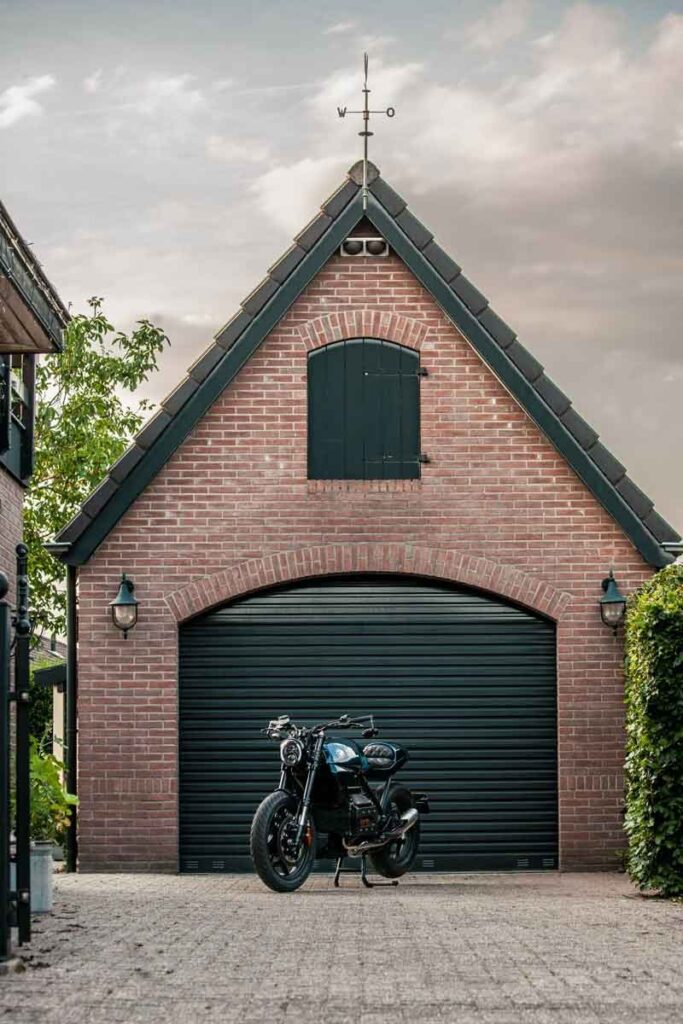
Conclusion
In conclusion, the BMW K75 is an iconic motorcycle that offers a perfect blend of style, performance, and reliability. Its timeless design, powerful engine, and exceptional handling make it a favorite among motorcycle enthusiasts. Whether you are a seasoned rider or a newcomer to the world of motorcycles, the BMW K75 is a choice that will not disappoint. Experience the thrill and elegance of this classic motorcycle and join the community of passionate K75 riders today.
Facebook: https://www.facebook.com/Motobikeinworld
Twiter: https://twitter.com/motoinworld2023
Instagram: https://www.instagram.com/motoinworld/
Pinteres: https://www.pinterest.com/motoinworld/

